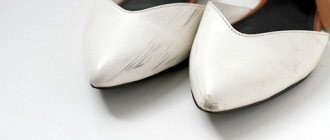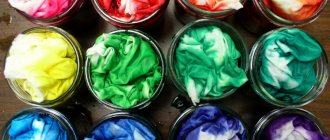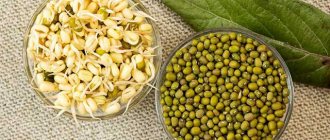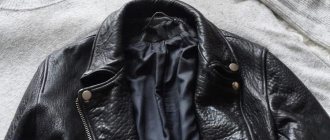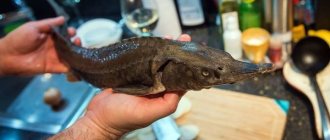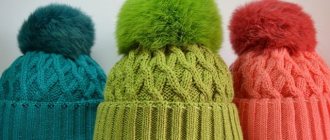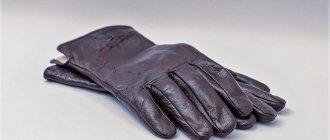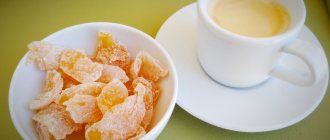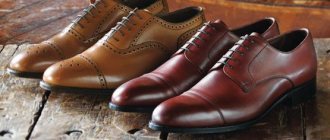Return to list of articles Even the most expensive and high-quality leather loses its presentable appearance over time. Scuffs appear, paint wears off in areas of greatest stress. And sometimes you just want to stand out and create a unique gradient on a leather bag, belt or purse.
Painting would be an excellent option. I am attracted by the large selection of colors and the opportunity to get involved in the creative process. We'll tell you what and how to dye leather at home to transform your product.
Requirements for leather paint
There is no paint specifically designed for dyeing leather products. Compositions that are applied to a smooth leather surface are intended for coloring various types of materials. Types of paints have their advantages and disadvantages. The compositions are classified according to the type of coating.
| Type | Description |
| Penetrating | Pigments penetrate into the skin structure |
| Covering | Pigments cover the surface, creating a water-repellent film |
Dyeing suede leather
Suede leather is more susceptible to changes in appearance due to a negative reaction to dirt, dust and moisture. The process of dyeing suede is somewhat different from processing leather products.
Firstly, suede leather is dyed only in a superficial way. Secondly, use distilled water. You can get it, for example, by melting ice.
The products are treated with a stiff brush using warm aniline dye. Then the painting is repeated. When processing each subsequent layer of paint, you need to add a little vinegar to fix the color.
At the end of the procedure, rinse the boots and leave them to dry. Use a special brush for suede to lift the pile.
How to cook at home with your own hands
You can paint things yourself using vegetable dyes. Natural compounds stain leather products well, maintaining the same qualities.
Expert opinion
Zakharova Irina Yurievna
Cleaning professional with 15 years of experience. Our best expert.
Ask a Question
Reference! Ink is considered a traditional material for deep coloring of leather products. The ink provides dense, uniform coverage.
Nails and vinegar
Using rusty nails and vinegar, you can prepare a composition for dyeing natural leather. To do this, rusty nails are soaked in a solution of table vinegar. The appearance of a characteristic brown tint indicates the end of the chemical reaction. Prepared pieces of leather are dipped into a vat of solution, then dried on a napkin. The mixture gives a dense brown or dark chocolate color.
Tea or ground coffee
Brewed coffee and infused tea were traditionally used to dye fabrics. The result obtained depends on the saturation of the drink. Tea or coffee is heated, then removed from the stove, cooled to a comfortable temperature, and filtered. A leather product is placed into the mixture and left until a rich shade is obtained. The result is a warm brown tint.
Onion peel
Using onion peels you can create a golden tint on porous skin. The product is boiled with onion peels over low heat. To obtain a deeper color, the leather is treated in this way several times after it has completely dried. Use fresh onion skins every time.
Attention! Products made from genuine leather should not be heated over high heat, otherwise the surface will begin to deform.
From improvised means
A good way to give a rich shade is to soak the skin in berry juice. Raspberry or blueberry juice concentrate gives a rich, deep coating. Raspberry juice provides a red-pink color, blueberries give a purple hue, lingonberries and cranberries color the skin in rich pink-red tones.
See also
What paints need to be mixed to obtain lilac color and its shades
Oak decoction
Natural leather is kept in a decoction of oak bark. This process creates a light brown coating that penetrates deep into the layers of the product.
Processing things after painting
After the skin has dried, it is necessary to fix the resulting shade. To do this, place the leather material in a special solution of 1 liter. water, 1 cup vinegar and 1 tbsp. spoons of salt. Then the skin should dry on a flat surface.
Next, treat the product with a special leather care cream. Attention! Suede items cannot be treated with cream; it is intended only for leather. After the cream is absorbed into the leather material, polish it with a soft brush.
Painting methods
The compositions are used in accordance with the painting methods. Some mixtures are suitable for creating an even film on the surface, others are suitable for giving a slight shade, but at the same time penetrate under the top film layer, creating a strong adhesion.
Superficial
A common dyeing method that is used for repairing leather furniture, various items, jackets, clothing, and shoes. The mechanism of action depends on the type of paint used. The pigment is applied to the surface of the product using a brush, sponge, or sprayer. The result of the work is a durable, even layer on the surface. The inside of the product is not subject to change.
Reference! The surface method is called the “gentle” method. It rarely leads to surface deformation and does not affect changes in the properties and purpose of the item.
Deep
Deep coloring means immersing, soaking or keeping an item in a specially prepared pigmented composition. The process is similar to the method of staining or tanning leather.
The disadvantage of this method is deformation of the skin, change in basic properties or qualities. The paint, which is used for deep coloring, penetrates all layers and helps change the shade of not only the front, but also the inside of the product.
Where to begin?
Before using paint, you should find out:
- how the product was painted;
- what method was used in production during leather finishing?
For non-professionals, finding the answer to these questions will be very difficult. But if you pay attention to some important details, then everything will be simple and clear.
Of course, it would be easier to take and paint a leather item without going into details. Probably, many do this, but in the end I only get a damaged product, which is very difficult to restore or impossible at all.
Methods of coloring products
There are two methods by which leather products are dyed:
- Surface coloring . With this method, the dye is applied only to the surface part of the product, using a swab, brush or spray. At the end of coloring the front side, a transparent glossy film is formed on it, which protects the skin from moisture. On the reverse side, the product remains natural in color.
- Deep dyeing method . Here the product is completely immersed in a paint bath for a certain time. As a result, both the outside and the inside of the skin become the same color.
When using surface paint on leather, first remove the protective glossy layer. To do this, you can use a solvent or acetone. Try them on an inconspicuous area of skin first.
Types of tanning leather products:
- Vegetable . This leather product has a pink-beige tint on the cut. It is not paintable.
- Chrome . In this case, the cut will have a gray-blue tint. Such things can be painted.
How to paint or repaint correctly
To properly process the product, you must adhere to certain rules. The paint is applied in an even layer on the treated and cleaned surface. The presence of obstacles, jags, and debris leads to the creation of a torn coating.
Surface preparation
The surface is cleaned of dust, litter and debris. Particular attention is paid to the places that are at the junction of parts. Pockets, fasteners, rivets are removed or cleaned with a fine brush. It is possible to degrease the skin using a solution of laundry soap. Wipe the surface with a sponge and solution, then carefully remove soap traces. After cleaning, the item is dried.
Application
Before application, the product is laid out on the work surface so that all elements are provided with free access. The paint is applied using any chosen method: spray gun, aerosol can, sponge, brush, rag. Technologists take several tools: in hard-to-reach places they use brushes or thin brushes, and for large areas they use sponges.
Drying
The final stage involves completely drying the painted product. For each case, the duration of this period varies. Drying time is indicated on the packaging of the paint chosen for the job.
Precautionary measures
To avoid damage, work is carried out using protective gloves and glasses. If paint gets into your eyes, you should quickly rinse your face with warm water.
Surface painting method
In this option, the paint for the skin can be exactly the same as with deep painting. The water-based dye must be concentrated; for this, use 200 ml of acetone or alcohol per 1 portion of dye .
To make the product black, you can choose stamp ink. Or, for example, paint a leather wallet using the traditional method and use ink from ballpoint pens filled with solvent. In addition, painting of leather products is carried out using iodine, potassium permanganate, and brilliant green.
In order for the paint to be distributed evenly on the product , using the surface painting method, you need to perform the following steps:
- Clean clothes from dirt and dust.
- Soak a leather wallet or any other item in water.
- Heat the mixture.
- Wipe the skin with a swab soaked in acetone or alcohol to remove the protective layer.
- Wipe the product with a solution: 1 tbsp. spoon of water for 1 tbsp. spoon of gelatin.
- Using a swab, paint the skin.
- For best effect, apply several layers of paint.
Features of painting various products
The coloring method is chosen depending on the configuration of the item being processed. At home, it is customary to use aerosols or cream paints in tubes.
See also
Symptoms and signs of paint poisoning, what to do at home
Interior of the car
It is recommended to paint the interior of a car covered in leather with aerosols. This method allows you to get an even coating. To ensure that the interior is completely dry, the car cannot be used for 72 hours from the date of painting.
Shoes
Shoes are coated with special compounds that are intended for shoe coating. Application is carried out after complete degreasing. Sponges, brushes and cans of liquid paint are used for coating.
Handbag
Bags with different parts require special application. After degreasing the surface, fasteners, locks, and decorative elements are sealed with tape. The paint is applied with a sponge, sequentially rubbing the pigment. When the surface is dry, polish the bag with a lint cloth.
Cloth
Jackets, skirts or trousers are dyed using deep dyeing. The basic rule for preparing clothes is complete degreasing. The best option is to use lemon juice to degrease the surface.
Gloves
Gloves are dyed by immersion in a solution containing pigments. After exposure, the gloves must be washed with cold water.
Attention! Leather products cannot be dried on a radiator. This will lead to deformation of the product and complete loss of shape.
Tips for dyeing leather
For painting, choose a room with good ventilation; many compositions have a pungent odor. Before work, the work area must be covered with polyethylene or paper. The leather material is fixed with tape.
Adviсe:
- Be sure to use protective equipment: rubber gloves, a respirator.
- Prepare in advance sponges, brushes, spray bottle, solvent, oil mixture, paint.
- Take into account the thickness and type of skin. The thick belt is tinted, and the gloves are dyed right through.
- Turpentine or gasoline removes grease stains.
- Wax for leather shoes will easily remove scuffed areas on the product.
- Thin, soft leather should not be subjected to aggressive cleaning before dyeing.
After use, the branded dye can be poured into a jar. The name and color of the paint are pasted on it, and the date of manufacture is written. The product is stored for several months.
How do you like the article?
How to make a drawing on leather
Any pattern can be transferred to the surface of genuine leather. Any person can handle cutting simple lines, but it is better to entrust the creation of a complex unique design to a specialist.
Description of works:
- The drawing is printed on a printer.
- The drawing is laid out face down.
- The ends of the pattern are attached with tape and moistened generously with nail polish remover.
After drying, an imprint remains on the skin. Cuts are made along the lines using a rotary knife.
Where can I get leather? 4 sources
Old clothes are a source of even and large pieces of leather. If a person doesn’t feel sorry for her or has no one to pass her on as an inheritance, let him boldly harass her. Get rid of clutter in your home and it will become easier to breathe. Bags, gloves, and leather shoe tops are a source of small pieces of leather. Since we are talking about painting, the scuffs and scratches characteristic of these wardrobe items will be disguised. This type of leather is thicker and less flexible. The shops. If you don’t have the required size and quality piece of leather at home, buy it at the store. Not every city has a specialized point of sale or even a department, in which case the Internet comes to the rescue. Any order will be delivered by mail or courier directly to your home. It's just a matter of price. It’s strange to suggest leather furniture as a source. Large panels from which the upholstery is sewn lead to the high cost of this type of product. Therefore, in the overwhelming majority of cases, when they fail, they are repaired, but are not allowed to be reused. However, if leather furniture is hopelessly damaged, you can use its upholstery for other needs.
Get rid of clutter in your home and it will become easier to breathe.
These are the answer options to the question of where to get leather.
Paint manufacturers
The quality of the product also depends on the reputation of the manufacturer. For self-use, you can purchase paint for leather shoes if there is no leather goods repair shop nearby. The packaging should indicate that this is a product for dyeing natural leather and its tone (color). List of common brands of leather dyes:
- Liquid leAther is an above-average product, made in the USA, used by specialists for spot and full skin coloring.
- Krkaska “Classic Leather”, average price, intended for independent and professional use. Produced in Russia.
- TM Salamander - offers products in the mid-price category. The durability of the product is good, the colors are rich, the tone corresponds to the description.
- Salton - products for home use, average price.
- Twist – dyes for natural suede and leather.
Which paint to choose?
Before preparing restoration staining, you should pay special attention to the choice of the product itself. There are currently many options on the shelves of shoe and leather stores.
First of all, it is worth distinguishing paint from impregnation or spray. The latter are used as leather care products.
Manufacturers produce paint in the form of a spray, a can with a foam tip, or simply in a container with a lid. It is worth noting that experts consider spray paint (spray) to be the most convenient for home painting. Its use is safe and during the work you can independently control the intensity of painting and, if necessary, apply another layer of the product. The spray also distributes evenly, which does not cause problems with over- or under-applying the colorant.
The foam-tipped can is also easy to use. After opening the seal of the container, it is enough to apply the product using rubbing movements. The paint impregnates the tip and, as it is consumed, is fed through a special outlet from the container onto the foam rubber. It is optimal to use for spot coloring of leather, when individual areas are subject to restoration, and not the entire product.
How to properly iron a leather jacket: practical tips
A box or tin of paint is used using auxiliary items - a sponge or a piece of natural fabric. You can paint absolutely any leather item with this paint.
Important: before you start directly painting, you need to take care of personal protective equipment - put on a protective screen or glasses, rubber gloves. Prevent accidental contact with exposed body parts.
Preparatory stage
First, the item to be treated should be cleaned, then wiped with a damp cloth or washed with soapy water. It is important not to forget about the handles. Place the jacket or raincoat over the hangers so that no folds form in the collar area. If you lay out clothes on a horizontal plane, you will have to turn them over frequently.
Dyeing a leather bag begins with cleaning the seams, folds, and decor from dirt and stains.
Leather manufacturers coat their products with a water-repellent wax that must be removed. To do this, you need to mix alcohol and acetone in equal proportions and add a little water. Moisten a cloth with the resulting mixture and thoroughly treat the skin with it. Then dissolve 20 ml of gelatin in a glass of water. Stir the solution until the liquid becomes homogeneous. Cover the skin with the mixture. This manipulation will contribute to the uniform distribution of color.
Clean the bag cover
Protecting handles before painting
How to prepare the skin: instructions
- To prepare the skin with your own hands, prepare the farbe, a bit of a sponge from the outside, which will then be used to apply the farbe directly. If there is no such thing, then you can use an original sponge. Also prepare a fixative that will be used to secure it to the skin. You will also need gum gloves to protect your hands during preparation.
- Lay out the skin prepared for preparation, soak the sponge in the barnberry and apply the farbe onto the skin with smooth, soft mixture. Repeat this until the entire farb skin is covered with farb, but stitch it together so that the skin does not bleed through.
- When finished, take the prepared gancherka from the outside (sponge), soak it in the barnberry and proceed to rub the farbi with a circular hand until you reach the desired consistency.
- After completing the skin preparation process, it is necessary to leave it for an hour sufficient for complete drying. If you need to speed up drying, you can quickly use a hairdryer and dry the ground area or the entire area with even hands.
- Having completed the drying process, the farb applied to the skin must be secured. For this purpose, a special acrylic fastener for skins is used. These products are presented in a wide range on the market, but we recommend that you use water-based ones. With the help of a sealer you can achieve either a matte or glossy effect. For which it is sufficient to obtain a certifiable official. Apply the rozchinnik on the barley with a smooth, smooth coat and smoothly with just one straight line. Do not apply the sealer on the stake at any time. If during the process you see a lot of separation or you see a lot of pins, don’t worry. All this should be removed after applying the sealer and drying it, and you wipe the affected area. Before speaking, with the help of fastening the skin is protected from washing and coloring, so that its application is not only for fastening the furbi, but also for further saving.
A leather seal can be prepared independently. For this you need to prepare a dose of 1 tablespoon of salt, 200 gr. from one liter of normal water. After mixing, also apply the rub on the sanding surface using a sponge or gancher from the outside, and then wait for complete drying.
LiveInternetLiveInternet
-There is a spray in cans for painting leather products. I painted the bag.
-If you paint it completely, then the spray is the best! If you want to create some kind of art, then for this there are acrylic paints for leather... and acrylic varnish... I once painted shoes... and a leather jacket...
-There is liquid paint for leather “Karat”. I used this paint (black) to update both my boots and my jacket. It's holding up well. But I don’t know if there are other colors.
- “Carat” - also comes in brown color. I bought it at the hardware store.
How to dye leather
Glycerin will help restore skin color after washing: lubricate the front side with it. Touch up scratches on the leather with aniline shoe polish or nitro dyes. Felt-tip pens are good for tinting a section of skin. For decorative small items where the leather will not have strong curves, use oil paints or coat the leather with nail polish.
ENCYCLOPEDIA OF METHODS AND TECHNOLOGIES https://patlah.ru/etm/etm-01/teh%20koza/hydoz_koza/hydoz_koza-2.htm
TYPES OF LEATHER DYES
· Universal repainting Teinture francaice art 0812 Sapphire (France) for all types of smooth leather (except mother-of-pearl), velor, nubuck, textiles. 400 rub./pcs.
· Paint for leather PERLAKOR Paint for leather and leather substitutes. Prof. line.
· Alcohol-based leather paint 200 gr. black Türkiye Alcohol-based paint for painting leather of various tanning and finished shoes. Transparent enamel with a strong coloring property, colors the skin without disturbing it softly. 72 UAH/piece
· TARRAGO leather paint. Highly resistant Spanish paint. Effectively repaints and touches up, does not sag, does not crack. 47 UAH/piece
· Water-based polyurethane paint for leather, fabric and plastisol. 300 UAH/l
· Leather enamel Akvakhim HS 503 black TU U 00209875.019. P-95
Perhaps the leathers you have to work with will be of a color that you are not currently happy with, or even undyed. Let's try to fix the situation and start painting. Do not think that this cannot be done at home, although, of course, the effect will not be the same as with industrial painting.
First of all, let’s understand that there are two types of dyeing: deep and superficial. In deep dyeing, the skin is immersed in a solution of one or another dye and kept in it. After such dyeing, the leather is painted on both the front and back sides. And with surface dyeing, the dye is applied only to the front side of the skin with a brush, swab or spray. At the same time, the melon side of the skin retains its original color.
Carefully examine the leather you are going to dye. If you are dealing with used leather, you should first clean it of dirt, cream layers, etc. Then try to determine how it was tanned: remember, vegetable tanned leather is pink-beige in color when cut, as a rule, it is do not paint during production; The cut of chrome-tanned leather is grey-blue; such leather, on the contrary, is almost always dyed in factories.
Now you need to determine whether the skin was dyed with deep or surface dyeing. The fact is that in the production of leather, especially shoe leather, surface dyeing with nitro dyes is most often used or combined with deep dyeing. The front side of such leather is covered with a shiny protective film that does not allow moisture to penetrate inside; therefore, when dyeing, this film will resist the dye solution. Try to remove it by wiping the skin with a swab moistened with acetone or solvents 646, 647, KR-36. True, it is unlikely that it will be possible to completely remove the nitro coating and obtain an intense color on such leather.
Having dealt with the skin, we choose a dyeing method. It might be worth a try first.
The most accessible dyes for this method are aniline, the same ones that are used for dyeing fabric. It is better to buy dyes for wool or universal ones, but if they are not on sale, dyes for cotton will also do, just keep in mind that the color of the leather being dyed will be less saturated.
Mix the dye powder thoroughly in a small amount of warm water, strain so that no lumps of dye get into the solution, this can lead to stains on the skin being dyed. Pour 1.5-2 liters of water into an enamel bowl, pour the dye into it and bring the solution to a boil. If you were working with fabric, it would be at this point that it should be immersed in the solution and continued boiling. However, it is dangerous to do this with the skin, it is “alive”. At temperatures above 45, for chrome-tanned leather up to 60, collagen (translated as glue), interacting with water, turns into a kind of gelatin, the leather shrinks, loses elasticity and strength, and in this case it is impossible to revive it. So remove the dye solution from the heat and cool it to the required 45, as they say “so that your hand can tolerate it” (our skin can safely withstand approximately the same temperature).
You can also dye leather with vegetable dyes. Using a decoction of oak bark, ground acorns, walnut shells, and apple tree bark, various brown tones are obtained. A decoction of alder bark, buckthorn bark, leaves and stems of celandine gives reddish-brown shades; larch bark - light brown; chestnut bark, green birch leaves - grayish-brown; willow bark, bird cherry, aspen, nettle leaves - green shades. You can also dye your skin in a decoction of horse chestnut roots, onion peels or tea if you need golden or beige shades. Decoctions of henna and basma are also used: henna to obtain red tones; Basma, depending on the concentration, ranges from green to black. Various minerals containing copper, iron, etc. are also used as dyes. At home, dyeing in a concentrated solution of potassium permanganate gives good results, which produces warm brown tones.
While the coloring composition is being prepared, the leather plate should be thoroughly wetted: you can simply soak it in warm water for several hours or, to speed up this process, wash it with your hands, without washing powder, of course. When the skin is immersed in water, see if any air bubbles are released from the pores of the skin. If the string of bubbles still stretches, it means the skin is not wet enough, and those places that are poorly saturated with water will remain unpainted.
First, I advise you to try painting a small piece of leather. If you are satisfied with the color, you can paint the entire plate. Just keep in mind that as the skin dries, the color becomes lighter, so it is better to be patient and wait until the control piece of leather is completely dry. To get a richer shade, add a dye of a darker tone to the solution; for a lighter shade, simply dilute it with water. If you have the same type of dyes of different colors, you can mix their solutions in one proportion or another to obtain the desired color. When mixing paints, always add a little dark to the lighter one.
Then we pour the dye into a wide bowl, the skin, wrung out of excess moisture and straightened, is immersed in the solution. It is necessary to ensure that the dye completely covers the surface of the skin. The plate should be rotated from time to time so that it is painted evenly. In addition, if bubbles appear from the skin pores again, take a stiff brush and, without removing the skin from the solution, rub its surface well.
When the dye has completely cooled, wring out the skin, then rinse first in warm, then in cold water. If the water becomes colored, repeat the rinse. To fix the paint, soak the skin in a solution of a glass of vinegar and 1 tablespoon of salt in a liter of water. Sometimes, in order to preserve a more intense color, the leather is not rinsed, but the dye is fixed by wiping an already dried leather plate with the same composition, or by rubbing colorless or matched shoe polish into its surface. It clogs the pores of the skin and prevents paint from coming out. True, such a skin must be used carefully, since it can fade when interacting with moisture. If the remaining dye is still quite saturated in color, do not rush to throw it out; you can dye something else in it. Pour the dye into a jar or bottle, attach a label indicating the type of dye and the date the solution was prepared. The dye is stored for several months.
After fixing the paint, squeeze out the leather plate, straighten it with your hands and place it face up on a wooden board to dry. Wood is hygroscopic and absorbs moisture well. Dry the skin at room temperature, away from sunlight and heat sources. In order to stretch the leather a little when drying, small nails are nailed along the edges.
First, two nails are driven in at the ends of one diagonal of the leather plate, then, so as not to warp it, at the ends of the second, and so on, with a distance between the nails of about 2 cm. But don’t overdo it, it’s difficult to work with overstretched leather.
While the leather is still slightly damp, without removing it from the nails, it should be fattened, since during the process of dyeing and rinsing the fats are washed out of the leather. It is necessary to ensure that both the skin and the fat are warm enough, then the fat mixture is more easily absorbed. Castor oil with the addition of a small amount of ammonia, 50% glycerin, and shoe care emulsion are used for fattening.” Sochi", various shoe polishes, both colorless and tone-on-tone. In addition, you can use fat compositions, for example, this: 50 g of castor oil mixed with 1 beaten egg white or a solution: for 1 liter of water - 100 g of glycerin and 200 g of salt, the composition will be better if you add from one to four yolks to it. Mixtures containing fish oil are good for fattening: grate a piece of laundry soap, add 1 liter of water, and bring to a boil over low heat. When the soap is completely dissolved, pour in 100-500g of fish “pork” fat, then a tablespoon of ammonia, stir. Apply the still warm solution over the bakhtarma, rubbing it well without stretching the skin. During the drying process, a white coating appears on the bakhtorm, which is removed with a damp cloth. There are also more complex mixtures: 50 ml of water, 25 g of softened butter, 20 g of glycerin, fish oil, castor or machine oil, 20 g of grated baby soap, 20 ml of any shampoo, 20 ml of vinegar, 5 ml of ammonia. . Mix the mixture with a mixer.
All fat compositions are applied to the skin with a swab or brush, rubbed in a circular motion, and after a few hours, knead the skin with your hands. You shouldn't do this with your bare hands, you'll instantly rub yourself with calluses. Protect your hands by wearing leather gloves. . If the skin is still hard, try fattening it again on both the front and back sides, and, of course, knead it well, which helps the fat penetrate deeper into the skin structure.
With fat mixtures that contain large quantities of butter or castor oil, you must be careful to avoid greasy skin. You can try to remove excess fat by rubbing crushed chalk or tooth powder into the skin, which absorbs the fat, then shake it off and wipe the skin with a damp cloth. It is best to try the fat composition on a control piece before fattening the entire leather plate. Fatting deepens the color of the skin.
The final touch in the dyeing process is to treat the surface of the leather with shoe polish. If possible, use high-quality creams for this purpose. “Polish” creams are ideal, they are superbly polished thanks to the silicone they contain and give the final gloss to your products. A matching cream hides imperfections in the color, and if the desired color is not available, creams of two or even several colors are mixed: blue with yellow gives green, yellow with a small amount of black gives olive, etc. Do not apply each color alternately to the skin , first squeeze the creams onto the board, mix them thoroughly, and only then, having achieved the desired shade, treat the skin. If you still cannot choose the color of the cream, use a colorless one.
After a few minutes, when the cream is completely absorbed, polish the surface of the leather with a soft brush. When polishing, do not press on the brush, this will only rub the cream deeper into the skin. The brush should barely touch the surface of the skin. Now move your palms over the surface of the skin with light stroking movements. No brush can polish the surface as well as the hands of a master.
It's time to try surface painting. To prepare the skin for surface painting, it is enough to wipe its front surface, on which the coloring composition will be applied, with any solvent.
The same aniline dyes are used, only a more concentrated aqueous solution is prepared or a packet of dye is diluted in 200 ml of acetone or alcohol. The already familiar herbal decoctions are also suitable for surface dyeing.
In addition, stamp ink black, purple, blue, red is used as dyes; rainbow ink in black, purple and red; paste from ballpoint pen refills. To remove it, the rod, cut into pieces, is filled with a solvent in a small pharmacy bottle.
You can also go to the pharmacy for dyes: potassium permanganate (potassium permanganate), iodine, an alcohol solution of brilliant green (brilliant green), fucorcin (gives a beautiful crimson tint) will do. Any wood stain also perfectly colors leather: in powder, in aqueous and alcoholic solutions, nitro stain.
To obtain gray shades of varying saturation, the leather is not dyed, but etched with a solution of ferrous sulfate. Treatment with solutions of potash and soda ash (these chemicals can be bought in photo stores) gives a red-brown color, and with potassium permanganate - brown.
Apply the selected dye to the skin using a swab or, if a large surface is being treated, a brush. To make the coloring more effective, the dye solution is slightly heated. It is recommended to coat leather with the nitro coating removed with a gelatin solution (a tablespoon per glass of water) before painting. Do not try to dye your skin in one go, using a very concentrated dye solution. Without sufficient experience in such work, it is unlikely that you will get a high-quality, uniform color; it is better to take a lighter dye and apply it several times. You can use aerosol paints for leather or velor. I recommend salamander and kiwi. Spray the aerosol in an oblique stream from a distance of 20-30 cm, quickly moving along the surface of the leather plate. In order for the paint (except for nitro dyes) to lay more evenly, the front side of the leather must first be moistened with water.
Almost all of the listed dyes are fixed by wiping the surface of the skin with a vinegar solution. You can rinse your skin first.
Aerosol nitro dyes are sprayed like any other aerosol, just try to apply the layer of paint as thinly as possible, otherwise streaks are inevitable. It is better to remove them after finishing the work, when the paint has dried thoroughly, using a circular motion with a swab slightly moistened with solvent. Each layer of paint is applied at intervals of several minutes so that it has time to dry. Just don’t get carried away, leather coated with a thick layer of nitro dye is more like leatherette, in addition, the resulting film is inelastic and easily cracks at bends. When finished painting, dry the skin.
To paint leather, use “Extra” paint, NC-36 enamel, nitro enamel for leather, or, at worst, any nitro paint, adding a little castor oil to it for durability of the coating. First, apply a primer layer of paint diluted with a solvent in a ratio of 1:3, the remaining layers are applied with undiluted paint. On small surfaces the paint is applied with a swab, on larger surfaces with a brush or using a sprayer. Rub the paint with quick movements, without stopping, so that smudges do not form. This kind of paint takes longer to dry, so each layer is dried for at least an hour, and after work for a day.
The range of dyes for leather is somewhat limited, and if you need some exotic color, you can use oil paints for painting. True, they are also not resistant to bending, so they are used for painting fragments of purely decorative products. This paint takes 2-3 days to dry.
Sometimes, on the contrary, it’s just the skin tone that doesn’t suit you. Here you can use coloring creams for leather: “Polish”, “Sochi”, “Karat”, etc. To correct the not very beautiful color of the leather obtained as a result of vegetable tanning, its surface is wiped with a weak solution of one or another dye. At the end of dyeing, the leather, as after deep dyeing, is fattened, kneaded, treated with shoe polish and polished.
Natural suede is painted with surface dyeing. To do this, use a heated solution of aniline dye in water; it is recommended to take distilled water, rain water, or from melted snow or ice. In summer, such water can be obtained by freezing it in the freezer, then melting the ice. The dye is applied to the surface of the suede with a stiff brush, as if rubbing it in, allowed to absorb for several minutes, then the coloring is repeated. And so several times, gradually adding vinegar to the paint. In a similar way, you can paint suede with Rainbow ink. They are not diluted with water, but vinegar is added little by little. Suede is rinsed in water, then the paint is fixed in a weak solution of vinegar and dried. Unlike other types of leather, suede is not oiled or covered with creams.
It happens that the coloring turns out to be spotty. Don’t be upset, just without knowing it, you have done uneven dyeing, there is such a thing. Use it on thin, undyed leather or light-colored leather. Such leathers are used to cover boxes, folders, various covers, and are used to make finishing elements in a number of leather products. The surface painted in this way resembles a marble pattern, which is why uneven painting is often called marbling. It is performed in several ways.
The dry leather plate is taken by the upper edge, the lower edge touches the surface of the dye, and they begin to very slowly immerse the skin in the solution. After the top edge has sunk into the paint, the skin is removed just as slowly. This operation can be repeated several times, as a result the skin will be colored tonally: from a light tone in the upper part of the plate to a dark one in the lower part. A smoother and more uniform coloring can be achieved by pre-wetting the skin.
Many of you have probably dyed fabric to achieve the “varenok” effect; the same techniques are also suitable for leather. Wet or dry, depending on what result you want to get, twist the skin with a rope so that it does not unravel, or tie it with ropes in several places and immerse it in a warm dye solution.
A similar effect is achieved by painting in a cramped container; the skin has to be crushed hard to be completely immersed in the paint, and the walls of the container do not allow it to unfold.
For surface dyeing, the following technique is used: the skin is moistened and, having been thoroughly crumpled, turned into something like a model of a mountainous area, and dried. The surface is then treated with spray paint or paint is carefully poured over the tops of the “hills”. You can use dyes of several colors. Colored streams, running from the mountains into the valleys, form a picturesque and unpredictable pattern. When the paint has dried, the skin is rinsed or, after wetting it over the bakhtarma, straightened and dried.
To get a speckled color, lay the wet leather on a board and sprinkle the surface with dry aniline dye powder, leave for 20-30 minutes, then rinse. A similar result is achieved by using a stiff brush. It is dipped into the dye solution, then with quick movements of the finger along the bristles, the dye is sprayed over the surface of the skin. True, it happens that not only the skin, but also surrounding objects are stained.
Another way: lightly moisten the glass with water, sprinkle with dye powder, you can use several colors, contrasting or similar in tone, stir the paint randomly with a stick or following some kind of pattern. Gently place the wet skin face down on the glass, leave for 20-30 minutes, and rinse.
Fixing the color and further processing of the leather proceeds in the same way as with deep or surface dyeing. Sometimes your work requires softening your skin color, in which case bleaching will help you. Lily bleach is more suitable for skin than others. The powder is diluted in a small amount of warm water, filtered, and water is added to two liters. Then they do the same when painting: well-wetted and wrung-out skin is completely immersed in a bleach solution and left in it until the solution cools. During bleaching, the skin should be rotated so that it bleaches evenly. If you need to get an even lighter shade, bleaching is repeated. To do this, the already used bleach solution is heated and the skin is immersed in it again.
I advise you, as with dyeing, to first try bleaching on a piece of leather. Please note that as the leather dries, the color will become lighter, and leather with a nitro coating, even if you tried to remove it, does not respond well to bleaching. After bleaching, the leather plate is rinsed in water, dried, and treated with shoe polish.
It makes sense to restore the color of the leather if it has been damaged before cutting. To do this, you can use special nitro paints that are commercially available (there is now a very large selection on offer - carefully read the instructions on the label).
One or two drops of castor oil added to 100 g of nitro paint will make it more durable and will not crack on bends. This paint is applied with a brush. Nitro paint for leather in aerosol cans itself lays down in an even thin layer. It is better to keep the spray head of the can at a distance of 15-20 cm and quickly move it along the surface. After drying the skin for 10-15 minutes, apply the next layer, and repeat this several times until you get a strong, uniform color. Final drying will require another 1 hour. After this, you can remove streaks and paint streaks, if any, with a solvent.
It’s good if you come across “Extra” leather paint or NTs-36 enamel, which is available in white, red, black and brown. They are applied with a brush, gauze pad or airbrush. Two or three layers are enough, which will have to dry within an hour. Final drying is 24 hours.
Small paint defects can be easily masked with suitable colored shoe polishes and even wax mastics for furniture. As a last resort, you can make the dye yourself - based on aniline dyes for wool or multi-colored inks. To get a shiny surface, it is better to apply this paint to the skin mixed with gelatin. Permanent leather paint is made from ballpoint pen paste. The paste does not even need to be removed from the unusable rods. It is enough to cut them into pieces (except for writing units) and fill them in a glass bottle with a suitable solvent, for example KR-36 or No. 646. (The recipe for this paint was reported by leather artist V. Belkova).
For decorative leather crafts, especially those that will not experience strong bending and stretching, oil paints for painting are also acceptable. They can be used to paint small leather parts.
A finished leather craft, for example a box, can be coated with colorless furniture varnish, after soaking the leather in two or three steps with a gelatin solution.
To obtain half-tone transitions, the skin is etched with solutions: a gray tint is given by iron sulfate, a brownish tint is given by potash (potassium carbonate) or soda ash. It is better to etch with a weak solution, applying it with a soft brush or swab over and over again. This will ensure an even tone and a smooth transition of shades.
In some cases, it makes sense to completely remove the old, cracked and discolored nitro paint coating from the leather. By the way, shoe leather is usually covered with a special moisture-proof layer, making it tough and shiny. Scratches and dents do not make a shiny surface any more beautiful. Therefore, it is better to scrape off thick skin that has lost its appearance with a sharp knife or scraper. After wetting the cleaned surface with water, check to see if there are any light spots on it. These are areas where the moisture-proof layer still remains. Scrape them off. The surface treatment will be completed by sanding with fine-grained sandpaper. You can remove the nitro coating with any nitro paint solvent (dipping a soft cloth into it and carefully wiping the skin in a circular motion. Acetone and solvent 646 are suitable. The bad thing here is that not only nitro paints dissolve, but also fats, so the skin will have to be burned again.
It is easy to dye suede at home. Aniline wool dyes are suitable for this. V.I. Burdin offered a quite accessible recipe in the magazine. The coloring solution is prepared in any container except iron. It is better to take distilled or rain water. You can also use melted pieces of snow from the refrigerator evaporator. For 1 bag of aniline dye you need 1.5 liters of this water. The temperature of the solution should not exceed 45° C. At high temperatures, irreversible changes occur in collagen, and suede will lose its elasticity and strength. Apply the prepared warm solution to the suede and rub evenly with a brush. Repeat the operation several times with a break of 20 minutes, gradually adding vinegar to the coloring solution. At the end, the suede is wiped with a weak solution of vinegar, washed in running water and dried at room temperature. Using the same recipe, you can paint suede with Rainbow ink. Experience shows that only violet, red and black ink are suitable for this. If you want to have a suede product in bright blue or green, the number with ink will not work. The ink for coloring is not diluted, but only vinegar is added to it, as when coloring with aniline dyes.
Faux suede cannot be dyed using these methods. Sometimes it makes sense to dye finished leather or suede products.
In the modern leather industry, complex physical and chemical processes are used for dressing, tanning, fatliquoring, and dyeing leather. But this modern technology grew out of traditional folk techniques, which used more or less accessible natural remedies. Some of them are sometimes worth turning to for today's home craftsmen.
The peoples of the North have always been famous for their artistic leather and fur products. Their centuries-old experience has accumulated many simple and accessible processing techniques. For example, to obtain beautiful skin colors, Chukotka folk craftsmen have long done without chemical dyes. They dyed their skins a pleasant brown-orange color with an infusion of alder bark. The wet crushed bark, steamed in warm water, was rubbed into the skin, rolled up and left for an hour or two. Then they unrolled and repeated rubbing, adding bark with infusion. And so on several times. The work is long and tedious, and the residents of Kamchatka, for example, have adapted to rubbing alder infusion with their feet. It is easier, and the skin only benefits from such treatment: it becomes smooth and soft, and acquires shine. Different shades of brown were obtained by adding local minerals to alder infusion (in urban conditions, for example, copper sulfate, iron sulfate, alum are suitable for this).
The Evenks steamed alder bark to dye skins with the addition of lye (this could also be grated laundry soap). The dark brown, almost black color was obtained by smoking the skin over a fire. To do this, the skin was hung high above the fireplace for several days, and care was taken to ensure that the soot was evenly deposited on the surface of the skin. It is only important that the skin is not exposed to high temperatures.
It is difficult to judge the durability of soot as a dye, but it is known that the waterproof properties of the leather are noticeably increased. After all, soot contains fats. Therefore, leather mittens, summer shoes, and clothes for rainy weather were usually dyed this way.
Northern peoples sometimes used larch bark as a natural dye. It gives a light brown tint. Another dye, iron ore stone ground into powder, gives a brown-ocher or grayish-brown tint. The Nganasans (residents of Taimyr) have long used natural minerals for ornamental coloring of parts of national clothing.
Black leather was produced using graphite. Shades of red - using ocher or red lead. The paints were thoroughly ground on a flat stone, adding water little by little. To obtain certain shades they were mixed in different proportions. The paint was applied to the skin using a tightly rolled ball of deer hair. Thin decorative lines were drawn with sticks split at the end.
Residents of Kamchatka used something like glue paint to obtain black shiny leather. Glue made from fish skin was applied to the prepared skin from the bakhtarma side. After letting it dry a little, finely crushed charcoal was rubbed evenly with a cloth until the skin was dry. The coloring turned out to be quite durable.
Traditional methods include rubbing with soot mixed with fat or fish glue. Of the natural leather dyes that have long been used in the middle zone, we can mention a decoction of oak bark. It produces beautiful shades of brown. In a decoction of chestnut bark, the skin becomes gray-brown, and willow bark gives a greenish tint. Leather dye solutions should not be too hot. The protein that makes up collagen usually begins to break down at a temperature of 42-44° C.
Caring for painted products
- To protect against moisture and dust, use special store-bought products.
- Store clothes in the closet on hangers or cover them from dust with a natural fabric bag. Keep it away from radiators. Do not store items in plastic bags that do not allow air to pass through.
- To get rid of dust, use a vacuum cleaner or wipe the surface with a damp cloth. Do not use thinner or benzine to clean the products.
- Iron leather items only from the inside out through gauze in the “wool” mode.
- Periodically wipe the products with glycerin, petroleum jelly or castor oil.
- Avoid direct sunlight and precipitation. After rain, dry clothes with a soft cloth and dry at room temperature.

